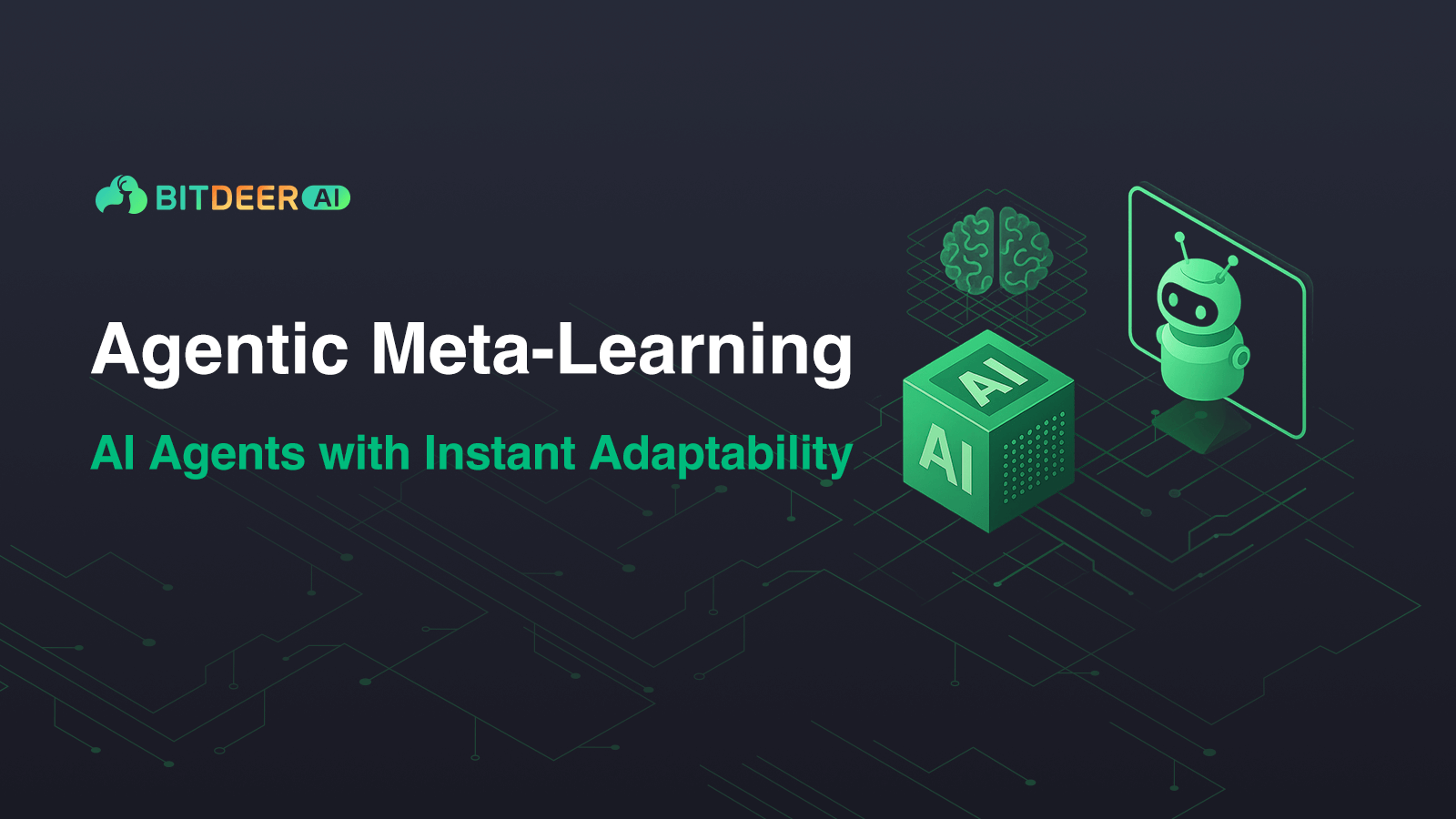Agentic Meta-Learning: Adapting Task-Oriented Agents on the Fly

Imagine rolling out a customer-service chatbot that, within minutes, can switch from handling billing inquiries to troubleshooting technical issues without rebuilding its entire knowledge base. Or picture a warehouse robot that, after a handful of interactions, masters a new assembly line configuration without weeks of retraining. That’s the promise of agentic meta-learning, a “learning-to-learn” approach that equips AI agents with the tools to pick up new tasks almost instantly.
Learning How to Learn
Traditional AI agents are like specialists: excellent at a narrowly defined job, but quickly out of their depth when circumstances change. Meta-learning flips this on its head. Instead of optimizing solely for one task, we train agents on the process of adaptation itself. Over time, they internalize a rapid-adaptation strategy so when exposed to a new task, they need only a few examples or interactions to recalibrate.
Key ingredients include:
- Diverse Task Exposure: During training, agents experience a wide range of environments or problem types, for example, different ticket categories for support bots, varied pickup points for robots, or contrasting dialogue styles for sales agents.
- Meta-Optimization Loops: Algorithms like MAML (Model-Agnostic Meta-Learning) tune the agent’s parameters so that just one or two gradient steps on a fresh task yield strong performance.
- Memory-Based Adaptation: Techniques such as RL² or recurrent meta-learners embed past experiences into an internal state, letting agents adapt without explicit backpropagation at runtime.
Why It Feels Truly “Agentic”
What sets agentic meta-learning apart is its proactive flavor. Rather than passively receiving data, these agents can:
- Ask Clarifying Questions: A support bot might prompt users for the single most critical piece of information, rather than waiting for full transcripts.
- Select High-Value Examples: A sales assistant could choose to analyze a few emails that maximize its learning about a new client’s tone and preferences.
- Adjust On the Fly: Once it senses a shift - say, a new product launch, it dynamically reallocates its internal resources to prioritize relevant knowledge.
This self-driven behavior mirrors how humans learn: we seek the most informative clues, test hypotheses in real time, and refine our mental models continuously.
Architecting Agentic Meta-Learning in Practice
Building an agentic meta-learning pipeline involves several practical steps:
- Curate Your Task Suite. Gather a representative mix of challenges your agent must handle, support queries of different complexities, robotic tasks of varying dexterity requirements, or sales scenarios spanning multiple industries.
- Design Your Adaptation Interface. Define clear hooks for incoming feedback: labeled examples, reward signals, or conversational corrections. Agents need a well-structured “learning API” to integrate new data swiftly.
- Balance Speed and Stability. More inner-loop gradient steps can improve final accuracy, but each step adds latency. For real-time applications, you might favor a memory-based learner that updates its hidden state rather than re-computing gradients.
- Benchmark Both Before and After. Always measure initial performance on unseen tasks and track improvement after your adaptation budget, whether that’s five examples, ten interactions, or a fixed time window.
Real-World Wins
- Customer Support: A telecom provider used agentic meta-learning to launch a holiday-season support bot. By meta-training on past promotions, it needed only a dozen new examples to handle the latest offers, cutting rollout time from weeks to hours.
- Sales Outreach: An enterprise software vendor deployed an intelligent assistant that adapted its email templates on the fly to match each prospect’s industry lingo, boosting reply rates by 25%.
- Robotic Assembly: A manufacturing partner demonstrated that a single warehouse robot, after two minutes of guided interaction, could grasp and sort a completely new set of parts with 90% accuracy.
Challenges and the Road Ahead
No technology is without hurdles. Agentic meta-learning must guard against catastrophic forgetting, where new tasks overwrite previous skills. It also demands a rich bank of training tasks, a nontrivial effort for highly specialized domains. And in safety-critical settings, rapid online adaptation necessitates rigorous guardrails to prevent errant behaviors.
Looking forward, the fusion of continual learning (where agents accumulate experience over months or years) with meta-learning promises truly lifelong learners. Advances in unsupervised adaptation, allowing agents to infer how to learn without explicit labels, will further reduce human effort. As these methods mature, we’ll see AI agents that evolve as swiftly as the businesses they serve, delivering personalized, context-aware experiences at scale.
Agentic meta-learning isn’t science fiction. It’s a practical blueprint for the next generation of AI, agents that don’t just perform tasks but master the art of adaptation itself.